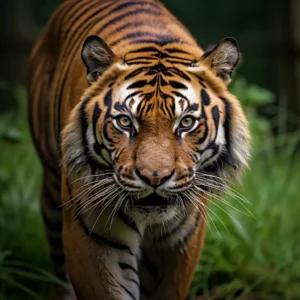Cheetah reintroduction in India

Welcome to the world of the fastest land animal and its thrilling comeback story in India! After a hiatus of several decades, India is rolling out the green carpet for these speedy felines. The reintroduction of cheetahs in India is not just about bringing back an extinct species; it’s about restoring the balance of an ecosystem, and boy, is it a rollercoaster of excitement and challenges!
Why Reintroduce Cheetahs in India?

So, why bring back these spotted sprinters? Well, India’s grasslands were once a playground for cheetahs. But due to habitat loss and hunting, they were declared extinct in the country in 1952. Bringing them back is like fixing a piece of the ecological puzzle that was lost. It’s like giving Mother Nature a high-five!
-
Ecological Importance:
Cheetahs play a vital role in maintaining the balance of ecosystems. They control herbivore populations, which in turn helps in vegetation management.
-
Cultural Significance:
Cheetahs hold a special place in Indian history and culture. Their return is a nod to India’s rich wildlife heritage.
-
Tourism Boost:
Let’s not forget the tourism angle! Cheetahs can become star attractions, boosting wildlife tourism and local economies.
Challenges and Concerns
But, it’s not all sunshine and gazelles for the reintroduced cheetahs. They face several challenges:
Habitat Suitability: Finding the perfect home for these cats is tricky. They need vast open landscapes to do their speedy chases.
Human-Wildlife Conflict: With human settlements encroaching on wildlife areas, the risk of conflict is high. It’s like having a new, very fast neighbor who’s not great at respecting boundaries.
Genetic Diversity: Ensuring a healthy genetic pool for a small population is like trying to bake a large cake with very few ingredients. It’s possible, but tricky!
The Cheetah Comeback Trail
The reintroduction journey is a meticulous one:

Site Selection: Identifying areas that mimic the cheetah’s natural habitat.
Cheetah Sourcing: Getting cheetahs from friendly countries (thanks, Namibia!).
Health Checks and Quarantine: Ensuring the cheetahs are fit and fabulous before their big debut.
Soft Release: Gradually introducing them to their new home, like easing into a warm bath.
Impact on Local Communities and Biodiversity
The cheetah reintroduction has a ripple effect:
-
Community Involvement:
It’s essential to get local communities on board. After all, they’re the ones sharing their backyard with these new residents.
-
Biodiversity Enhancement:
Cheetahs can help in restoring the natural order, promoting a more diverse and thriving ecosystem.
The Road Ahead
The road ahead for cheetah reintroduction in India is paved with optimism and caution. It’s a balancing act of conservation goals and practical realities. But with careful planning and collaboration, this could be a landmark achievement in wildlife conservation.
Conclusion
The return of the cheetahs to India is not just a wildlife story; it’s a tale of hope, resilience, and the enduring spirit of nature. It shows that with collective efforts, we can rewrite the future of our planet’s biodiversity. Fasten your seatbelts, folks – the cheetahs are coming, and they’re bringing a whirlwind of positive change!

